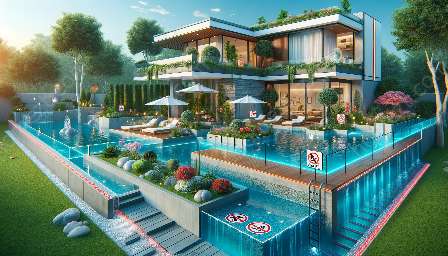Slips and falls can pose significant risks in spa and swimming pool areas, leading to injuries for guests and users. It is essential to prioritize safety and implement preventive measures to minimize these risks. In this article, we will explore various strategies and tips for preventing slips and falls in spa and swimming pool environments, ensuring a safe and enjoyable experience for everyone.
Understanding the Risks
Spa and swimming pool areas are often characterized by wet surfaces, which can increase the likelihood of slips and falls. Additionally, these environments may involve spa treatments, pool activities, and relaxation, making it crucial to address safety concerns effectively. By understanding the potential risks, we can implement targeted measures to mitigate them and create a safer space for guests and users.
Tips for Preventing Slips and Falls
1. Surface Maintenance: Regularly inspect and maintain the surfaces in spa and swimming pool areas to ensure they are free from hazards such as uneven tiles, cracks, or slippery substances. Implement prompt repairs and cleaning protocols to address any issues that may compromise safety.
2. Non-Slip Flooring: Consider using non-slip flooring materials in high-risk areas, such as around the pool or in spa treatment rooms. These specialized surfaces can provide better traction, reducing the likelihood of slips and falls.
3. Effective Signage: Use clear and prominent signage to highlight potential hazards and provide safety instructions to guests and users. This can include reminders to walk carefully, warnings about wet surfaces, and directional signs to guide individuals safely.
4. Proper Lighting: Ensure that spa and swimming pool areas are well-lit, especially during evening or low-light conditions. Adequate lighting can help individuals see potential risks and navigate the environment with greater awareness.
5. Accessible Handrails and Grab Bars: Install sturdy handrails and grab bars in strategic locations, such as near pool entry points or alongside spa amenities. These features can offer support and stability, reducing the risk of falls, particularly for older adults and individuals with mobility challenges.
Training and Awareness
1. Staff Training: Provide comprehensive training for spa and pool staff to enable them to identify and address potential safety hazards promptly. Educate them about proper spill cleanup procedures, emergency response protocols, and techniques to assist guests in need.
2. Guest Education: Inform guests and users about safety guidelines and best practices within spa and pool environments. This can be achieved through clear communication at the time of booking, in-room informational materials, and visible signage throughout the facility.
Regular Inspections and Maintenance
1. Periodic Inspections: Conduct regular inspections of spa and pool areas to identify potential safety hazards, such as loose mats, malfunctioning equipment, or worn-out surfaces. Address any issues promptly to maintain a safe environment.
2. Maintenance Protocols: Establish proactive maintenance schedules for facilities, equipment, and infrastructure within spa and swimming pool areas. This can include scheduled checks for non-slip coatings, water drainage systems, and the functionality of safety features.
Emergency Preparedness
Develop and communicate clear emergency response plans for slips and falls within spa and swimming pool areas. This should include protocols for contacting medical assistance, providing initial aid, and securing the area to prevent additional incidents.
Conclusion
By prioritizing preventive measures and safety strategies, spa and swimming pool facilities can create a secure and welcoming environment for guests and users. Taking proactive steps to minimize the risk of slips and falls not only enhances safety but also contributes to a positive guest experience. With ongoing vigilance and a commitment to safety, spa and pool environments can be enjoyed with confidence and peace of mind.


